To be a proficient forager it takes a lot more than venturing outdoors and picking plants you can easily identify. Getting to know plant lingo is important when reading identification books so that you can properly id plants. Another important component to proficiency is being able to identify plants in all seasons, including winter. Even if you are not a fervent forager, if you simply enjoy looking at and identifying outdoor plants then you are probably accustomed to putting aside this pursuit in the late fall and winter. Why not get out and enjoy what helps to shape the winter landscape?
No matter the weather, being outdoors is important to our overall physical and mental health. For those who are not avid hikers, getting out to local parks can be a fun, educational adventure when you look closely at the “dead” plants that stand taller than the snow. These dead plants are basically the skeletons of bygone summer plants.
To help with identification, I posted a video on YouTube to help with actual winter weed identification. You can view it by clicking here. Below are some images with information that will help you learn more about what plants in winter look like.
Achenes are single-seeded fruits. A receptacle holds the fruits in place. Goldenrod and aster seeds have very small achenes. An aster achene is in the above image.
The crown of hair, called a pappus is on the aster (above). The pappus acts like a parachute which enables the fruits to spread. Goldenrod flowers (mostly) grow in dense clusters; asters are found in single arrangements. An example of the goldenrod is the main image at the top of this blog.
Although not all goldenrods have galls, this is a way to help identify a goldenrod in the winter. The goldenrod gall is roundish and generally found in the middle of them stem. The gall fly lays eggs on the stem. Hatched larvae chew into the stem and the gall develops.
Another way to identify a goldenrod is by the mass of tiny leaves. A tiny fly called the goldenrod gall midge creates this goldenrod bunch gall. It stops the main stem from growing, but tiny branches extend outward.
Treat yourself to an afternoon in a field, a park or in the woods and see how many plants you can identify, you may just surprise yourself! Be sure not to forget to watch Winter Weed Identification!



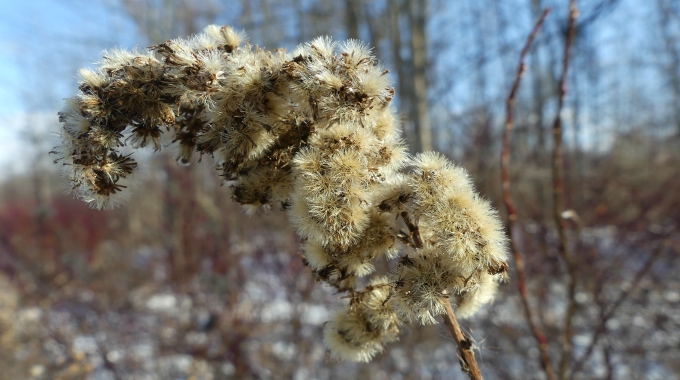
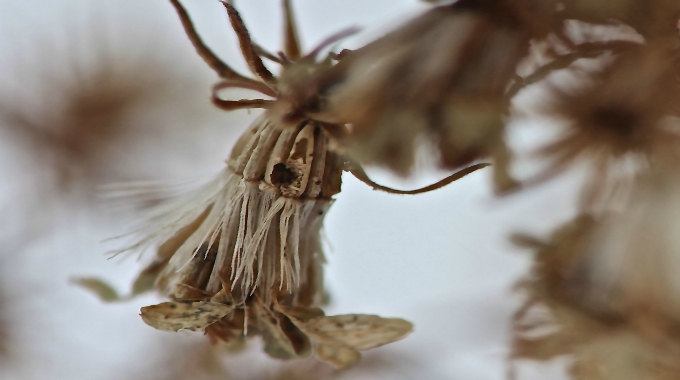
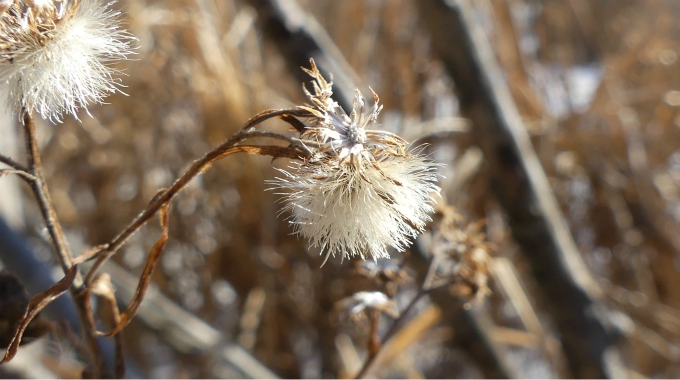
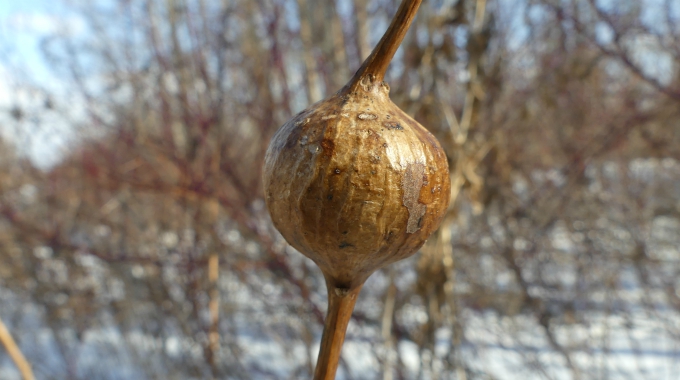
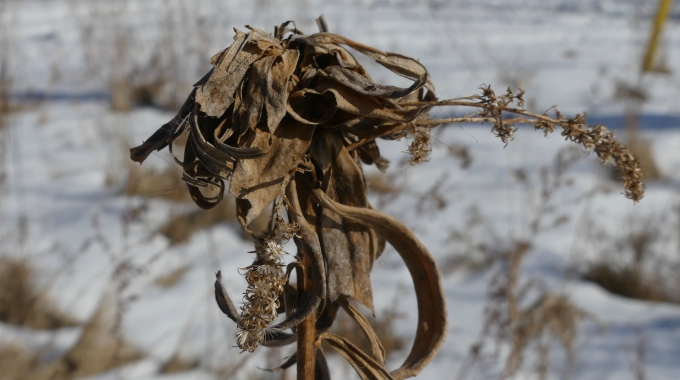

Thanks for the pics and post.
My son and friends were walking in fields last week and he pointed out black “scabs” type disfiguration on many shrubs and small tress. It breaks off easily and i figure it to be a kind of insect gall.
Wish i had taken a photo.
Rather than round it was elongated on branches.
Do you lead foraging outings?
Put me on yhe alert list.
Thanks,
Linda Wells
Hello Linda
Sounds like black knot cherry fungus that your son and friends found – not edible!! Yes I do walks. I do not have a mailing list for walks – however I do have an events page and you can monitor that!
Cheers, Karen
HOw cool!!!!! Something to do in winter!!!! THANK YOU!!!
You are most welcome!
You are nothing short of being the best educator! THANK YOU!!!!!
You are nothing short of being the best educator! THANK YOU!!!!!
Oh my – thank YOU!
You are nothing short of being the best educator! THANK YOU!!!!!
Learning in the winter too – why not!!!!! This is super and thanks!!!!!
You are welcome!!
Awesome info with great images!
Thank you!!
Great way to pass the winter days love this!